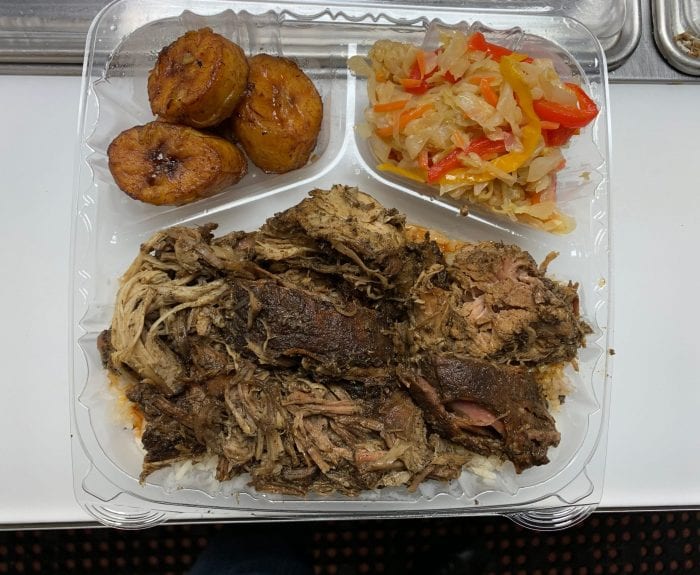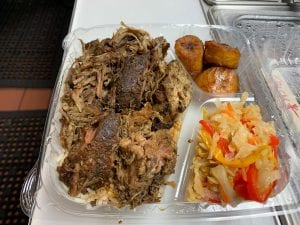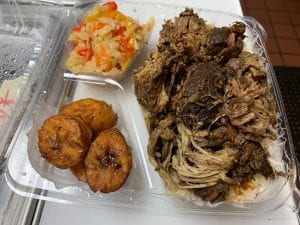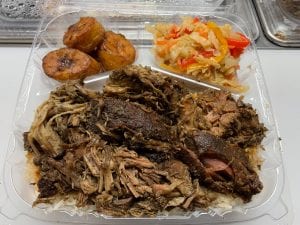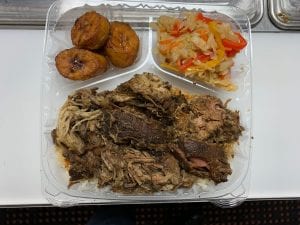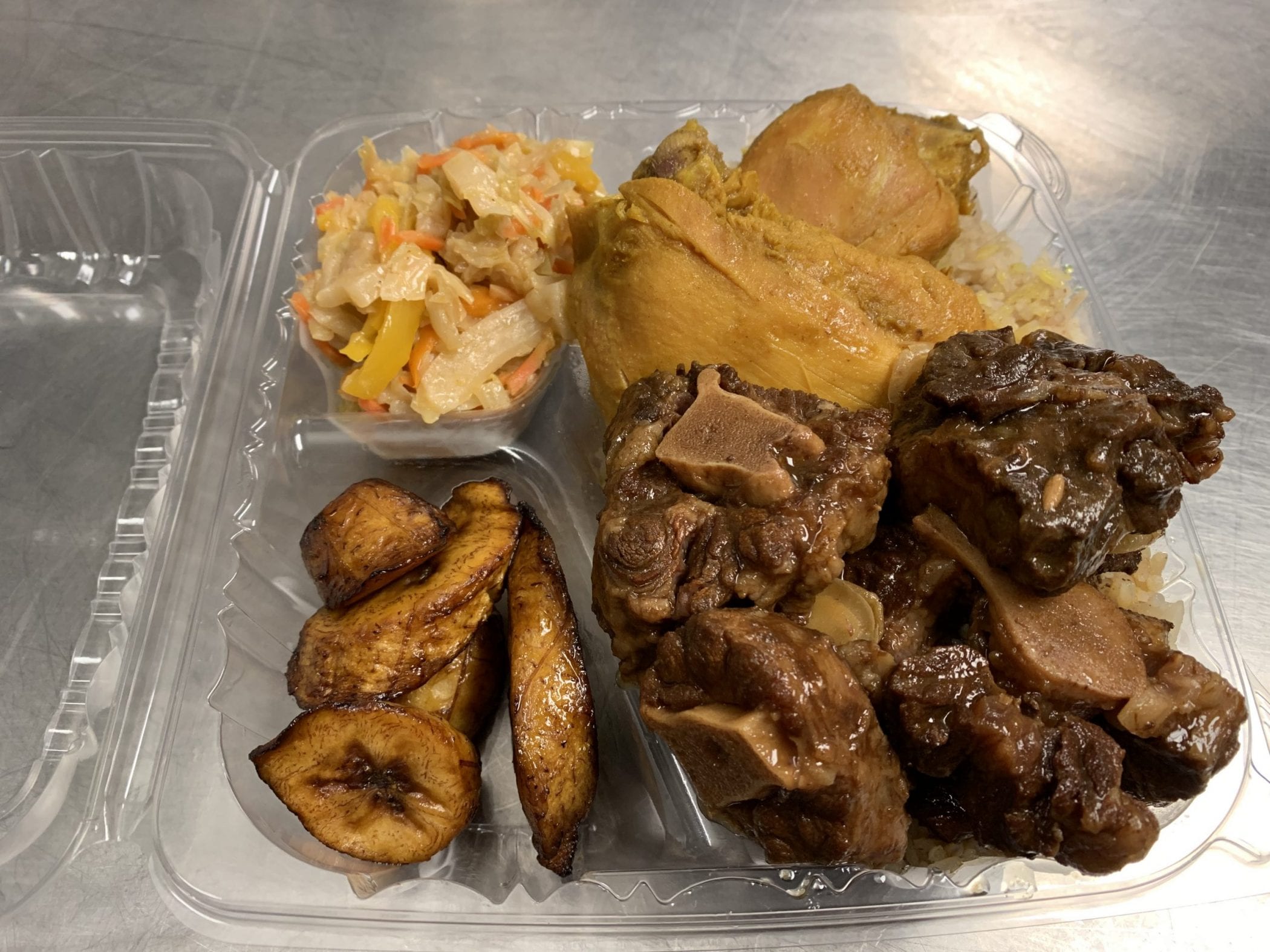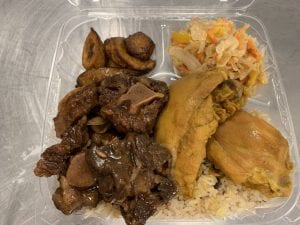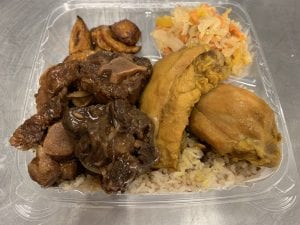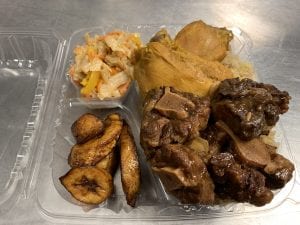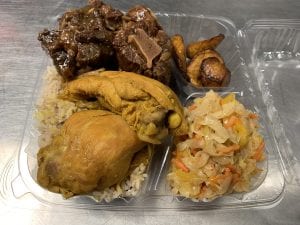Curry and Brown Stew Chicken
Curry Chicken
Jamaican curry chicken has rich flavor and the real taste of the islands. If you’ve never had Jamaican curry chicken, it’s time to fix that.
A perfect meal for children, Jamaican curry chicken, is an everyday meal. Ours contains Jamaican curry powder, scallions, onion, fresh thyme, and extra Trelawny love.
Our Jamaican curry powder has a unique flavor blast, which is due to the combination of both savory and sweet spices.
The History of the Curry Chicken
Curry Chicken is probably the third most famous Caribbean dish. Jerk chicken is number one. Jamaican patties probably number two. Following the first two dishes are Jamaican curry, Chicken curry, Goat curry, and fish curry. The top five traditional Jamaican meals are just so tasty.
It’s real & flavorful Jamaican Curry Chicken, succulent, finger-licking, and delicious with just the right amount of spice in beautiful curry gravy.
The Jamaican Curry Chicken recipe is a favorite meal for every Jamaican and can be found at every local restaurant. With just the right herbs and spices, it’s a finger-licking meal that leaves you wanting more.
Brown stew chicken
Brown Stew Chicken is a dish typically eaten for dinner throughout the Caribbean islands. The label: “brown” originates because of the distinct dark color. This deeply flavorful color is achieved by browning the chicken in a rich gravy.
The most important piece of our recipe is the marinate. We use it on the chicken, so the spices truly penetrate the meat. The rich color is present when we lightly fry our chicken until all sides are a deep golden brown. Ingredients, along with the reserved marinade and added to taste.
The History of the Brown Stew Chicken
It’s also referred to as: stew chicken is a dish typically eaten for dinner throughout the English speaking Caribbean islands. The dish is popular in Jamaica, Antigua, Trinidad and Tobago, Barbados, Saint Lucia, Grenada, Belize, Dominica, and Caribbean communities throughout the world.
Curry or Brown Stew and Goat or Oxtail
Curry or Brown Stew and Goat or Oxtail are a ffavorite combination at Taste of Trelawny!
Brown Stew Chicken and Curry Goat
Brown Stew Chicken is a dish typically eaten for dinner throughout the Caribbean islands. The label: “brown” originates because of the distinct dark color. Our goat meat is succulent tender and rich with less saturated fat, calories, and cholesterol than other red meats.
Chunky pieces of the goat are slowly simmered in aromatic blend garlic, allspice thyme, onions, and with Jamaican curry taking center stage until the sauce is thick and creamy.
Brown stew chicken
Brown Stew Chicken is a dish typically eaten for dinner throughout the Caribbean islands. The label: “brown” originates because of the distinct dark color. This deeply flavorful color is achieved by browning the chicken in a rich gravy.
The most important piece of our recipe is the marinate. We use it on the chicken, so the spices truly penetrate the meat. The rich color is present when we lightly fry our chicken until all sides are a deep golden brown. Ingredients, along with the reserved marinade and added to taste.
The History of the Brown Stew Chicken
It’s also referred to as: stew chicken is a dish typically eaten for dinner throughout the English speaking Caribbean islands. The dish is popular in Jamaica, Antigua, Trinidad and Tobago, Barbados, Saint Lucia, Grenada, Belize, Dominica, and Caribbean communities throughout the world.
Curry Chicken
Jamaican curry chicken has rich flavor and the real taste of the islands. If you’ve never had Jamaican curry chicken, it’s time to fix that. A perfect meal for children, Jamaican curry chicken, is an everyday meal. Ours contains Jamaican curry powder, scallions, onion, fresh thyme, and extra Trelawny love. Our Jamaican curry powder has a unique flavor blast, which is due to the combination of both savory and sweet spices.
The History of the Curry Chicken
Curry Chicken is probably the third most famous Caribbean dish. Jerk chicken is number one. Jamaican patties probably number two. Following the first two dishes are Jamaican curry, Chicken curry, Goat curry, and fish curry. The top five traditional Jamaican meals are just so tasty.
It’s real & flavorful Jamaican Curry Chicken, succulent, finger-licking, and delicious with just the right amount of spice in beautiful curry gravy. The Jamaican Curry Chicken recipe is a favorite meal for every Jamaican and can be found at every local restaurant. With just the right herbs and spices, it’s a finger-licking meal that leaves you wanting more.
Curry Goat
Our goat meat is succulent tender and rich with less saturated fat, calories, and cholesterol than other red meats. Chunky pieces of the goat are slowly simmered in aromatic blend garlic, allspice thyme, onions, and with Jamaican curry taking center stage until the sauce is thick and creamy. All of the flavors melt into the goat meat and creates a really wonderful dish after a few hours.
Jamaican Curry Goat is insanely delicious, slow-cooked Jamaican Spiced Curry that is full of flavor and tender to the bone! An absolutely must have at any Jamaican restaurant.
This creamy and satisfyingly delicious Caribbean curry goat, best served along with rice and peas, is made with goat meat cooked until tender, fresh spices, and so much flavor in every bite.
If there were ever a dish that screams comfort food, it’s a beautiful hot plate of curry goat. Some spices and aromatics really make this hearty dish so spectacular. These flavors come from onions, scallions, fresh thyme, scotch bonnet pepper, allspice, and garlic. Once everything is in the pot, you let it cook up until the goat gets tender.
All of the flavors meld into the goat meat and creates a wonderful dish after a few hours. You get a hint of heat from the scotch bonnet pepper, which bears a resemblance to a typical habanero pepper. Near the end, you’ll throw in some chopped potatoes, and they soak up all said flavor too.
I always find myself sneaking a piece out of the pot before it’s done, and it’s nothing like the finished product when the goat is so tender that it falls apart with a fork, drool.
Oxtail
Oxtail is a-rich meat, slow-cooked with butter bean as the main dish (with rice) most popular in, Jamaica, and other West Indian cultures. Our oxtails are rich with flavor, perfectly cooked until the meat is nearly fall-off-the-bone with creamy butter beans. Our flavors come from onions, scallions, fresh thyme, allspice, and garlic.
Jerk Chicken and Jerk Pork
Jerk Chicken and Jerk Pork
The meat is beef usually but not limited to chicken or pork. The main ingredients of the spicy jerk marinade sauce are allspice and Scotch bonnet peppers. From the crispy-skinned thighs coated with the warm heat, only jerk seasoning can deliver, to the rice scented with coconut milk, this one-skillet meal is all about the how much flavor you can pack into a single pan.
The ingredients for jerk seasoning vary slightly from recipe to recipe. There are always two mainstays you should always expect to see: scotch bonnet peppers (think: one step up from habaneros in both heat and flavor) and allspice. These two ingredients are what make jerk chicken taste like jerk chicken.
Traditional Jerk Chicken recipe magic
This recipe calls for wet jerk seasoning (like Grace or Walkerswood), rather than a jerk dry rub, so the flavor sinks in beyond the surface and into the chicken thighs.
The prepared message is easy to find in any grocery store with a robust international foods section. Remember that a little goes a long way when using jerk seasoning. A spoonful will do; it brings heat and spice to this skillet without totally overwhelming the dish.
The History of Jerk Chicken
Jerk chicken is a spicy grilled-meat dish that is most associated with Jamaica but common throughout the Caribbean. Jerk refers to a style of cooking in which the primary ingredient often is chicken. It may also be beef, pork, goat, boar, seafood, or vegetables.
They are coated in spices and slow-cooked over a fire or grill traditionally composed of green pimento wood positioned over burning coals; the resulting smoke is key to the flavor of the dish.
The cuisine had its origins with the Taino, who developed the jerk method and later taught it to African slaves, who, in turn, adapted it in creating jerk chicken. The word jerk reportedly stems from the Spanish charqui, meaning dried strips of meat similar to the modern-day jerky.
In Jamaica, jerk chicken is famous for its pungent marinade, marked by allspice and Scotch bonnet peppers, which are similar to habanero chili peppers. (Poking holes into the meat enables the marinade to spread.) Familiar side dishes include rice, beans, plantains, sweet potatoes, and small cornbread fritters called festival.
Traditional Jamaican Pork
Traditional Jamaican jerk pork is made on the grill until it is tender and tasty. The star of the show is the ingredients that give the jerk flavor. The pork butt traps in the sweet and spicy marinated spices, and the fat content gives the jerk pork more feeling than naturally basted meat.
Long, slow cooking on low heat brings out the juices and makes for a tender, more delicious cut of meat.
Jerk Pork is spicy so we do not skimp on the zest.
Jerk is supposed to be spicy, so we do not skimp on the zest. The result is flavorful and juicy pork roast with a blackened crust. This rustic dish is not easy to cut pork from the bone inelegant, even strips. Instead, just cut the jerk pork into large chunks to serve.
This juicy, flavorful pork takes time a few hours to brine, overnight to marinate, and 7 or 8 hours to smoke. It’s mostly hands-off and well worth it. In Jamaica, this is street food that’s eaten with rice and peas, grilled corn, or fried cornbread called festival.
There are two ways to cook jerk. One way is a grill with pimento wood branches, which will get you closer to the authentic Jamaican jerk experience. The second method is in the oven. Since you won’t be getting any smoke in the oven method, toast the whole spices in a dry, heavy skillet until fragrant before adding them to the marinade they’ll lend the finished sauce an additional layer of complexity.



